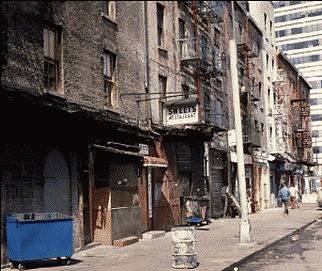Affordable housing problems for developers.
This part of this site was started in February 2003 concerned with social housing development financing, and the GoScheme development for rent Scheme Appraiser for England - in Excel, and FREE ! This site also deals with the social housing big picture, including development grant bidding.

|
The affordable housing development problem. Problems abound for those building or developing new low-income housing for rent. The main concerns for such affordable housing developers are the following ; FUNDING. For new affordable housing development the first problem is getting a grant or maybe free land that can make a low rent project work - and loans may also be needed. In Britain council planning permissions often use Planning Obligations by Deed of Agreement under Section 106 of the Town and Country Planning Act 1990 to make private housing developers contribute directly or indirectly to affordable housing when possible. A developer association, RSL, LSVT, ALMO or whatever needs a good housing grant bidding strategy to convince subsidy providers and lenders that proposed new development projects are deliverable, financially viable and good value for money. This will require a relevant sound development appraisal that is acceptable to all concerned. Even a larger low-income housing developer, who may be able to fund a little new social housing development with their own resources, should do this as always being good project management. SITES. Developers can have problems identifying good sites for new affordable housing development. While funding may adequately cover the cost of more expensive land, developers may still favour using cheaper sites. Britain's current Section 106 law above deals with subsidised land but this can be handled differently by different Local Authorities, mostly involving the developer identifying their own site first. Some Local Authorities publish lists of available Section 106 sites, but most will try to identify a site for a developers project making it best for developers to talk to the Local Authority early. Or you may be able to convince a local charity, church or other body to give you some land free on condition that it can be used only for affordable housing - the development will still need Local Authority approval of course. DEMAND. Good location and low rents will generally mean no problem for the social housing developer. However, a new development in a declining area that people are deserting will be very risky. And the low end of market rents in a locality can drop and compete locally with affordable rents. Both issues should be considered in appraising a project proposal. Demand may need to be local, because low-income families often face relocation difficulty that can prevent them from moving to your new site - but having good public transport could widen your site's catchment area. RENT ARREARS. Low-income renters often need help with paying rent, and if rent arrears are not to become excessive then the social housing landlord should be able to offer assistance to their renters in getting help with their rent. SOCIAL EXCLUSION. A fine new affordable development if poorly tenanted and managed can easily fall prey to routine vandalism and related social exclusion housing problems. see Social Exclusion A new estate should especially include a reasonable proportion of working families and not be tenanted largely with unemployed, welfare dependent and problem families. A large estate needs good repairs management perhaps with warden or camera security, and should not have a great excess of children. With good planning, these problems can all be successfully handled, and you will have a very rewarding new affordable housing development. To contact, (e-mail vincent@social-exclusion-housing.com): | |
A website you may wish to visit :- New Zealand Housing
© Social Exclusion Housing, 2025 - taking care with your privacy, see Social Exclusion Housing HOME.